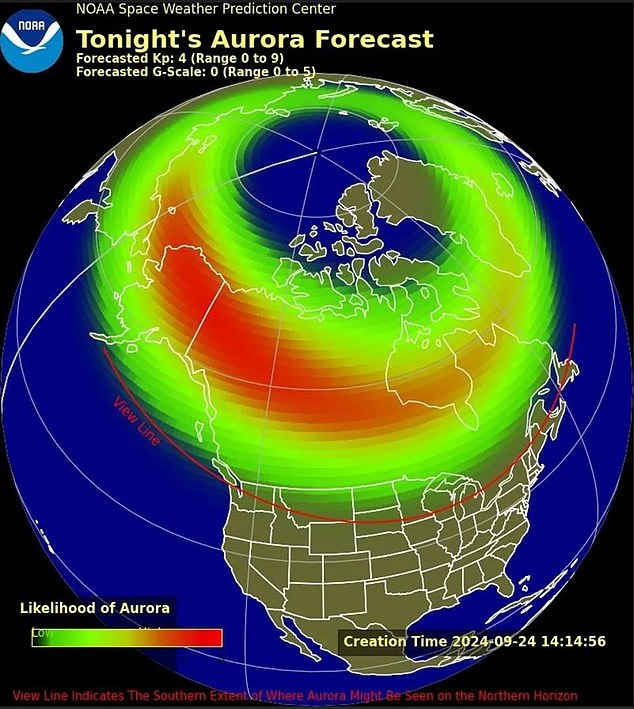Earth will be blasted by a geomagnetic storm TOMORROW – here’s what to brace for
A geomagnetic storm is expected to hit Earth tomorrow after the sun blasted a cloud of plasma and high-energy particles toward our planet.
The incoming coronal mass ejection (CME) originated at 5:40 p.m. ET on Sunday, when a massive sunspot spontaneously erupted.
The beam of solar plasma is currently hurtling towards our planet at over 650,000 miles per hour and is expected to reach Earth at 12:00pm Eastern Time (5:00pm UK, 2:00am AEST) on Wednesday.
Earth could experience a minor geomagnetic storm on Wednesday afternoon
But the CME will only bounce off the planet’s magnetosphere, or the region of space around a planet dominated by that planet’s magnetic field.
Normally, this minor blow wouldn’t produce a geomagnetic storm. But because it’s coming so close to the autumnal equinox — which occurred on Sunday — NOAA has forecast a minor G1 storm for tomorrow.
NOAA’s Space Weather Prediction Center classifies geomagnetic storms on a scale of G1 through G5, with G1 meaning “minor” and G5 meaning “extreme.”
A G5 storm could significantly disrupt infrastructure, causing power and communications outages across large areas.
However, we do not have to worry about this with this upcoming G1 storm. This type of storm has only a small risk of impacting infrastructure at high latitudes, including cell phone towers and satellites.
However, according to NOAA, it could create dazzling aurora borealis on the horizon of U.S. states along the northern border and in the northwest Midwest.

G1 storm could bring dazzling aurora borealis to northern states Tuesday and Wednesday night

Aurora is typically most active between 10pm and 2am. You’ll want to stay as far away from light pollution as possible to get a clear view.
It is no coincidence that this storm occurs just a few days after the autumnal equinox.
Geomagnetic storms occur more frequently in the weeks before and after the Earth’s two equinoxes.
This is because during the equinox, the Sun is directly above the Earth’s equator and our planet’s magnetosphere is aligned with the Sun’s magnetic field.
During the rest of the year, they are not properly aligned, meaning CMEs are partially deflected by the magnetosphere and we don’t experience their full impact.
But if a CME occurs while Earth is experiencing an equinox, it collides more directly with the planet’s magnetosphere and causes geomagnetic activity, even if the CME is weak or hit indirectly.
In contrast, the likelihood of geomagnetic storms is much lower around the solstices, when the Earth’s vertical tilt relative to the Sun or toward the Sun is greatest.
The chance of geomagnetic storms is about twice as great around the equinoxes as around the solstices.
Residents of northern states should watch for the aurora borealis on Tuesday and Wednesday nights. It is usually most active between 10pm and 2am, and you will want to get as far away from light pollution as possible to get a clear view.
